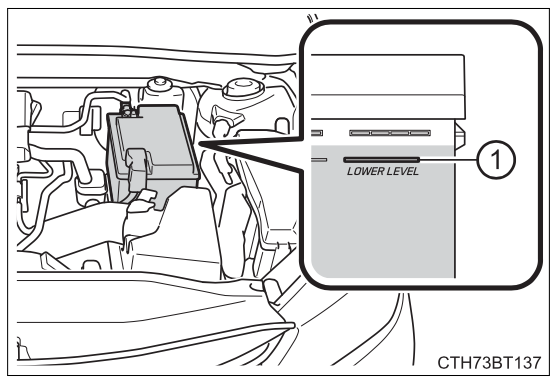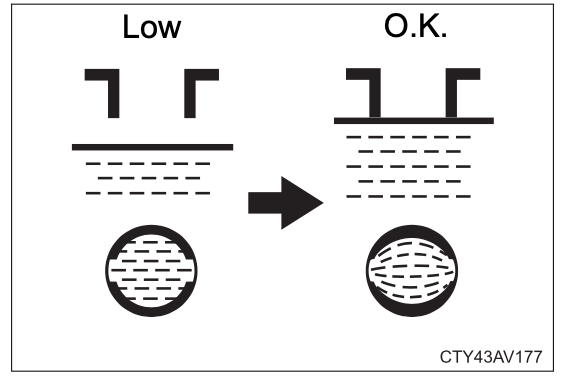A quick and easy DIY tutorial on how to remove and replace the Toyota Camry battery

Battery exterior
Make sure that the battery terminals are not corroded and that there are no loose connections, cracks, or loose clamps.

- Terminals
- Hold-down clamp
Checking battery fluid (batteries with vent plugs)

Check that the fluid level is above the “LOWER LEVEL” line.
- “LOWER LEVEL” line
If the fluid level is at or below the “LOWER LEVEL” line, add distilled water.
Adding distilled water (batteries with vent plugs)
- Remove the vent plug.
- Add distilled water.
If it is difficult to see the fluid level from the side, check it by looking directly into the cell.
- Put the vent plug back on and close it securely.
XS Power D3400 XS Series 12V 3,300 Amp AGM High Output Battery with M6 Terminal Bolt
Before recharging
When recharging, the battery produces hydrogen gas which is flammable and explosive. Therefore, observe the following before recharging:
- If recharging with the battery installed on the vehicle, be sure to disconnect the ground cable.
- Make sure the power switch on the charger is off when connecting and disconnecting the charger cables to the battery.
After recharging/reconnecting the battery (vehicles with a smart key system)
- Unlocking the doors using the smart key system may not be possible immediately after reconnecting the battery. If this happens, use the wireless remote control or the mechanical key to lock/unlock the doors.
- Start the engine with the engine switch in ACCESSORY mode. The engine may not start with the engine switch turned off. However, the engine will operate normally from the second attempt.
- The engine switch mode is recorded by the vehicle. If the battery is reconnected, the vehicle will return the engine switch mode to the status it was in before the battery was disconnected. Make sure to turn off the engine before disconnecting the battery. Take extra care when connecting the battery if the engine switch mode prior to discharge is unknown.
If the system will not start even after multiple attempts, contact your Toyota dealer.
WARNING
Chemicals in the battery
Batteries contain poisonous and corrosive sulfuric acid and may produce hydrogen gas which is flammable and explosive. To reduce the risk of death or serious injury, take the following precautions while working on or near the battery:
- Do not cause sparks by touching the battery terminals with tools.
- Do not smoke or light a match near the battery.
- Avoid contact with eyes, skin and clothes.
- Never inhale or swallow electrolyte.
- Wear protective safety glasses when working near the battery.
- Keep children away from the battery.
Where to safely charge the battery
Always charge the battery in an open area. Do not charge the battery in a garage or closed room where there is insufficient ventilation.
WARNING
How to recharge the battery (batteries without vent plugs)
Only perform a slow charge (5 A or less). The battery may explode if charged at a quicker rate.
Emergency measures regarding electrolyte
- If electrolyte gets in your eyes
Flush your eyes with clean water for at least 15 minutes and get immediate medical attention. If possible, continue to apply water with a sponge or cloth while traveling to the nearest medical facility. - If electrolyte gets on your skin
Wash the affected area thoroughly. If you feel pain or burning, get medical attention immediately. - If electrolyte gets on your clothes
It can soak through clothing on to your skin. Immediately take off the clothing and follow the procedure above if necessary. - If you accidentally swallow electrolyte
Drink a large quantity of water or milk. Get emergency medical attention immediately. - When disconnecting the battery
Do not disconnect the negative (-) terminal on the body side. The disconnected negative (-) terminal may touch the positive (+) terminal, which may cause a short and result in death or serious injury.
NOTICE
When recharging the battery
Never recharge the battery while the engine is running. Also, be sure all accessories are turned off.
When adding distilled water (batteries with vent plugs)
Avoid overfilling. Water spilled during battery recharging may cause corrosion.
